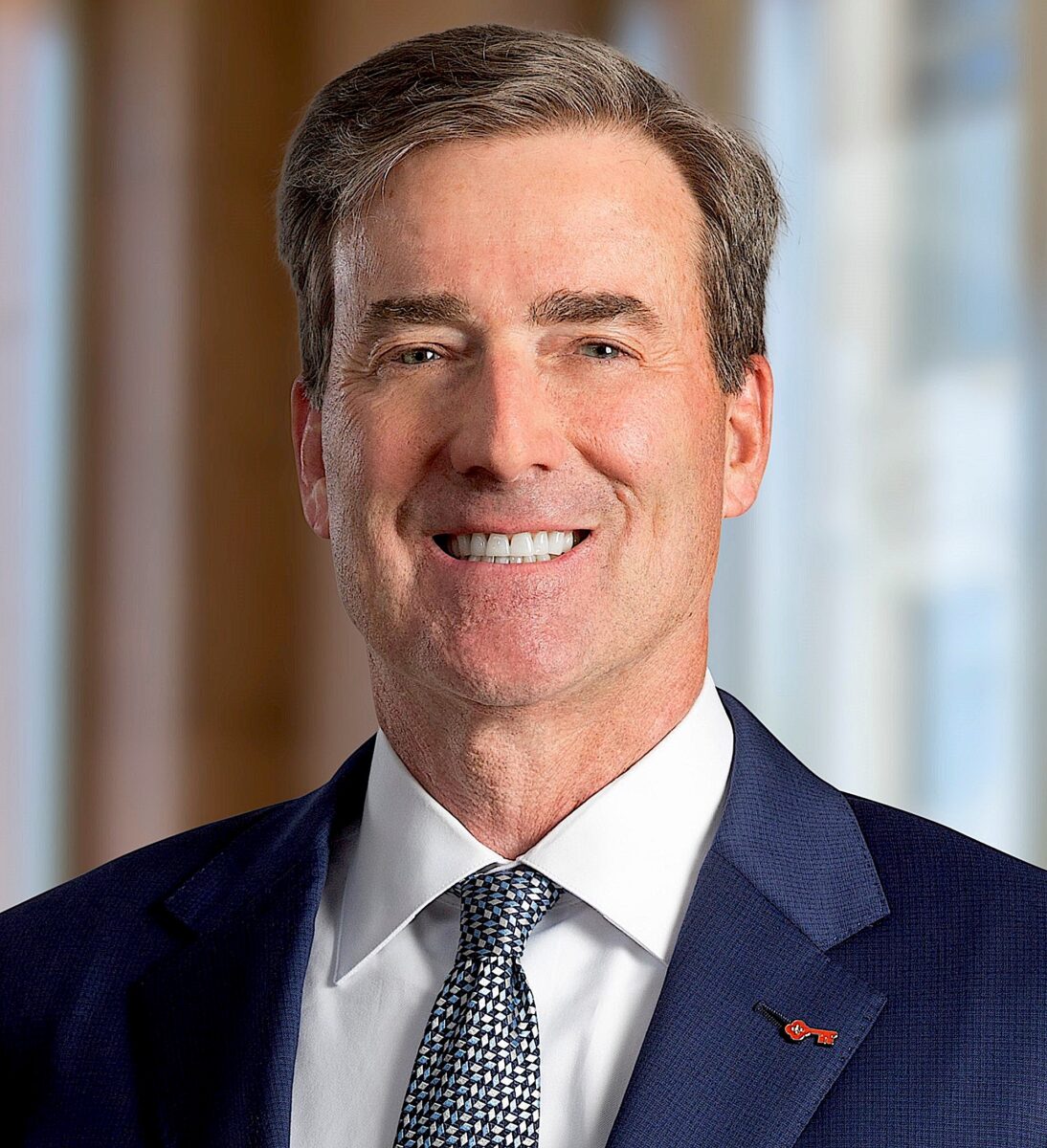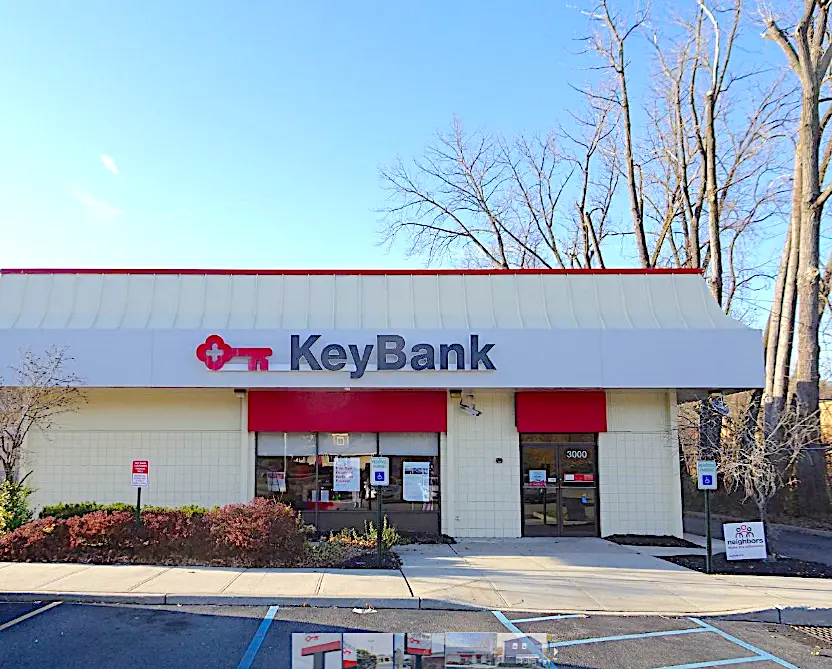Christopher Gorman, who is the chairman, president and CEO of KeyCorp, whose primary subsidiary is KeyBank, is not only optimistic about prospects for KeyBank and banking in general. Gorman also is sold on Westchester and the Hudson Valley as desirable locations for the bank, which is headquartered in Cleveland. In fact, he told the Business Journal that the bank is planning to open a new branch at 1 N. Main St. in Port Chester likely in the first quarter of next year, adding to the approximately three dozen outlets in the Westchester and Hudson Valley market.
On a recent visit to Tarrytown, Gorman joined John Manginelli, who is market president for Key’s Hudson Valley/Metro New York market and Northeast Regional Executive for KeyBank Real Estate Capital and local staff in celebrating Manginelli’s market area having been selected as the bank’s market of the year. KeyBank has defined 26 markets for its operations. As of March 31, 2024, the bank had assets of approximately $187 billion.

“What’s interesting about the Westchester market is you have a very diverse economy,” Gorman told the Business Journal. “Many of the markets that we operate in are really focused and have concentrations in certain industry areas. You have a very diverse economy here. What’s also interesting is it’s a combination of large businesses and also small businesses. Key has a very, very strong middle market business and I’ve spent time with some of our middle market customers since I’ve been on the ground here and I’m very impressed with the growth in some of the mid-market businesses here in Westchester.”
Gorman said that the banking system in the U.S. is very stable today and is very well capitalized.
“All the largest banks including Key just completed the DFAST test (Dodd-Frank Act Stress Test). All the banks passed with flying colors, meaning that the banks can all absorb a bunch of losses and still have excess capital after those,” Gorman said. “The banking system is very solid, very stable, and that’s obviously a good thing. As it relates to interest rates per se, most banks are positioned from an asset/liability perspective to be neutral. A move up or down (in interest rates) at this point in the cycle certainly is not going impact KeyBank and I don’t think it will impact other banks to any significant degree as well.”
Gorman said that the big unknowns in banking right now concern rulemaking that’s under consideration such as the Basel III Endgame, which would require an aggregate 16%, increase in capital at the largest banks as added protection against failure. Another regulatory change being considered deals with requirements for long-term debt to enhance financial stability.
“I don’t foresee any significant repositioning no matter what happens in the election,” Gorman said. “I do think that just the fact that the election will happen in November removes one uncertainty in the marketplace.”
Gorman noted that KeyCorp had recently reported second quarter 2024 financials that showed net income from continuing operations of $237 million. Revenues for the quarter were $1.53 billion. For 2023, Key reported revenues of $6.4 billion and net income of $964 million.
Gorman explained that he considers his biggest role is in leading the 17,000 people who are on the Key team.
“Its my job to be sure we balance a variety of constituencies, which include our teammates, our shareholders, our customers and the communities that we serve,” Gorman said.
Manginelli, in talking with the Business Journal, pointed out that the bank drills down very hard to find out what customer needs and challenges are. He said that on the residential mortgage side, while transactions may have slowed a bit the bank still is seeing a strong need for acquisition financing. Key also is very active in financing commercial properties.
“We’ve worked in middle market and in real estate extensively with our public sector group where townships are helping us to finance many of our clients,” Manginelli said. “We try to focus on our clients and prospects and the communities that we live in to make sure they thrive.”
Gorman noted that KeyBank is the number two lender in the U.S. for affordable housing.
“It’s particularly important in communities like Westchester where we have to make sure that we have places for people who work in the community to live in the community,” Gorman said.
Gorman said that while the banking industry has been criticized for its consumer fee structure, especially insufficient funds and overdraft fees, Key has been a market leader in paring back fees.

“We feel like we’ve been out front on that and obviously it’s a trade-off between the fees that you earn and creating a real loyal following. Our average customer has been with us for 20 years and the reason for that is that we treat them very, very fairly and give them really good service,” Gorman said. “In banking, it’s no secret that there are customers who rotate from bank to bank depending on what the promotions are.”
Gorman said that cyber risk is the greatest risk for the financial services industry as well as the U.S. itself.
“When it comes to cyber, I always tell our chief information officer that she has an unlimited budget when it comes to cybersecurity; it’s that important,” Gorman said. “You just can’t be too cautious. We spend $800 million a year in our tech area. When it comes to technology, we want to make sure it’s burned in to make sure it’s achieving what we want it to achieve.”
In looking toward the future, Gorman sees a continuing shift to digital in banking, He believes that the Covid pandemic helped push people to try it and continue using it. But, he suggested that greater adoption of digital banking will not result in the end of local branches, certainly not for Key’s 3.5 million customers.
“There always will be branches because when people are at an inflection point in their lives and looking for advice they’re willing to drive to a branch,” Gorman said. “Branches will continue to transition to being less transaction focused and more advisory focused. I do think in the U.S. the banking ecosystem is unique with about 4,600 market participants. But, at some point I do think you’ll see some consolidation of the 4,600 market participants.”





















